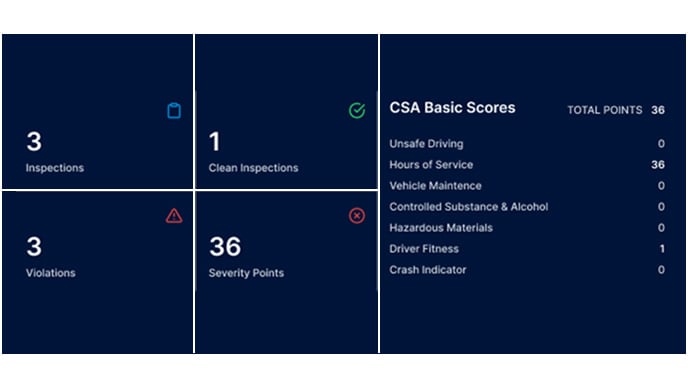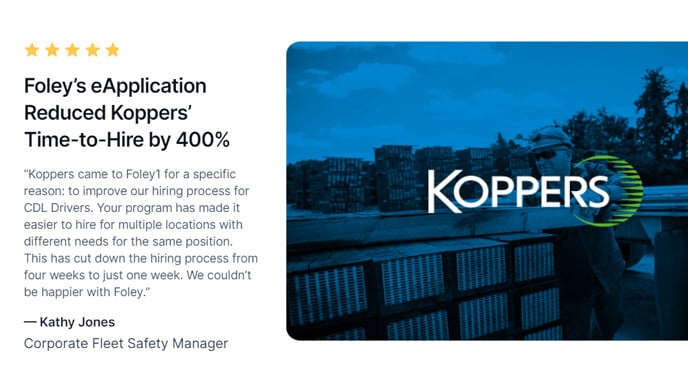- There are no suggestions because the search field is empty.
Hiring & Onboarding
Get more applicants and streamline the employee onboarding process with Dash by Foley.
Compliance
Avoid violations, fines, and increased DOT audit risks with our advanced DOT compliance software solutions.
Data Monitoring
Unlock the power of your driver, safety, and compliance data to build a higher standard of risk mitigation.
Background Checks
Foley's background checks promote better hiring practices and give you the peace of mind you deserve.

Check Out Our Latest Product Release
CSA Monitor tracks your driver and risk data in real time.
Learn MoreCompany Size
No matter the size of your company, Foley has the hiring and compliance solutions to help you thrive.
Initiatives
Your business goals are our purpose. Let's get more efficient, reduce risk, and grow together.
Industries
Foley's roots are planted in transportation. Over the last 30 years, we've expanded into new horizons.

Reach Your Business Goals with Dash
Foley's customizable platform for your unique initiatives.
Learn MoreCompany
Meet your new hiring, screening, data monitoring, and compliance partner: Foley.
Resource Library
Free, expertly crafted resources to help you navigate complex federal regulations and hiring practices, right at your fingertips.
Why Foley
Choosing a business partner isn't easy. Here's how Foley makes that decision effortless.

New Resources Waiting for You & Your Team
Expert, always-free resources at your fingertips.
Learn MoreHIRING & ONBOARDING
Get more applicants and streamline the employee onboarding process with Dash by Foley.
COMPLIANCE
Avoid violations, fines, and increased DOT audit risks with our advanced DOT compliance software solutions.
DATA MONITORING
Unlock the power of your driver, safety, and compliance data to build a higher standard of risk mitigation.
BACKGROUND CHECKS
Foley's background checks promote better hiring practices and give you the peace of mind you deserve.
COMPANY SIZE
No matter the size of your company, Foley has the hiring and compliance solutions to help you thrive.
INITIATIVES
Your business goals are our purpose. Let's get more efficient, reduce risk, and grow together.
INDUSTRIES
Foley's roots are planted in transportation. Over the last 30 years, we've expanded into new horizons.
COMPANY
Meet your new hiring, screening, data monitoring, and compliance partner: Foley.
RESOURCE LIBRARY
Free, expertly crafted resources to help you navigate complex federal regulations and hiring practices, right at your fingertips.
WHY FOLEY
Choosing a business partner isn't easy. Here's how Foley makes that decision effortless.
example title
example description
example title
example description


